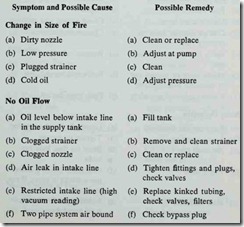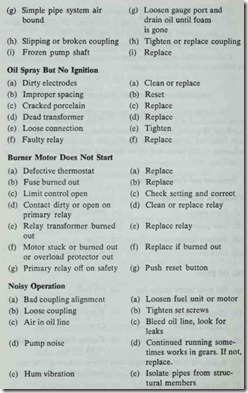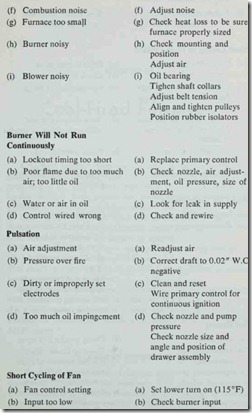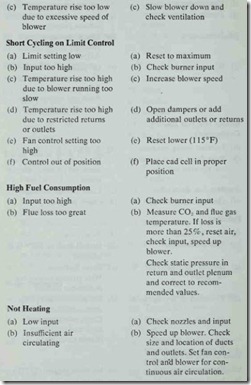AIR FILTER
A forced warm-air oil-fired furnace is supplied with either a disposable air filter or a permanent (washable) one. Never use a filter with a gravity warm-air furnace, because it will obstruct the air flow.
A disposable air filter should be inspected on a regular basis and replaced when dirty. Always replace the air filter with one of the same size and type of filter media. This information is usually found on a label attached to the filter.
A permanent air filter must also be regularly inspected. When it is dirty, it must be removed and cleaned. The usual method is to vacuum it and then to wash it in a soap or detergent and water solution.
Additional information about air filters is found in Chapter 11 (GAS-FIRED FURNACES) and Chapter 14, Volume 3 (AIR CLEANERS AND FILTERS).
AIR CONDITIONING
A furnace used in conjunction with a cooling unit should be installed in parallel or on the upstream side of the evaporator coil
to avoid condensation on the heating element. In a parallel instal lation, dampers or comparable means should be provided to pre vent chilled air from entering the furnace.
Duct sizing should include an allowance for air conditioning even though it may not be initially installed with the furnace. Air conditioning involves a greater volume of air than heating.
All ductwork located in unconditioned areas (attics, crawl spaces, etc.) downstream from the furnace should be insulated to prevent unwanted heat gain.
INSTALLATION AND MAINTENANCE CHECK LIST
A properly installed and maintained furnace will operate effi ciently and economically. The following installation check list is offered as a guide to the installer.
1. Be sure there is at least 0.01 inches wg draft over the fire.
2. Check for sufficient combustion and ventilation air.
3. Eliminate downdraft or back draft.
4. Provide sufficient space for service accessibility.
5. Check all field wiring.
6. Supply line fuse or circuit breaker must be of proper size and type for furnace.
7. Line voltage must meet specifications while furnace is operating.
8. Ductwork must be checked for proper balance, velocity, and quietness.
9. Check the fuel line for leaks.
10. Cycle the burner.
11. Check the limit switch.
12. Check the fan switch.
13. Make final adjustments to the fire.
14. Adjust the blower motor for desired speed.
15. Make sure air filter is properly secured.
16. Make sure all access panels have been secured.
17. Pitch air conditioning equipment condensate lines toward a drain.
18. Check thermostat heat anticipator setting.
19. Check thermostat for normal operation. Observe at least five ignition cycles before leaving the installation.
20. Clear and clean the area around the furnace .
Other installation and maintenance recommendations are found in various sections of this chapter.
TROUBLESHOOTING AN OIL-FIRED FURNACE
The list that follows contains the most common operating prob lems associated with oil-fired furnaces. Each problem is given in the form of a symptom, the possible cause, and a suggested rem edy. This list is intended to provide the operator with a quick reference to the cause and correction of a specific problem .



